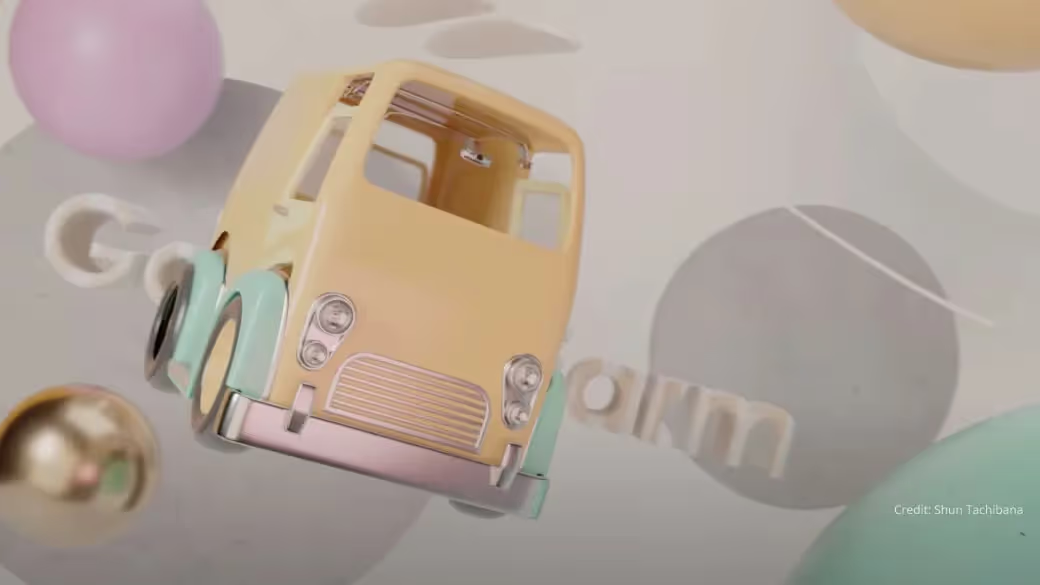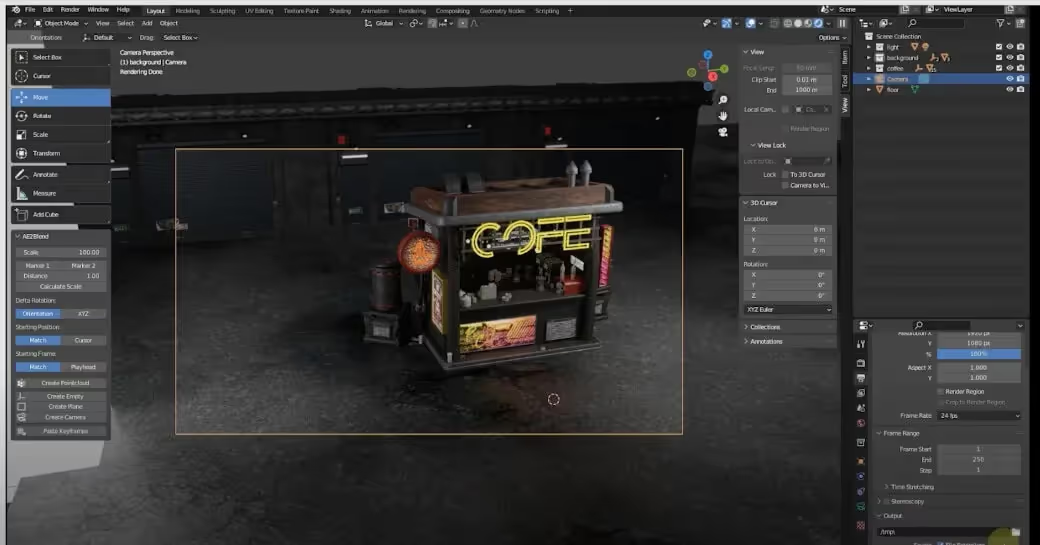
Shun Tachibana’s road to 3D is as roundabout as it gets. As a boy, he played a lot of football and probably saw himself playing the beautiful game as a pro when he grew up – a far cry from sitting in front of a computer for hours, designing 3D graphics. Instead, he grew up to make beautiful 3D visuals for different commercial and personal projects.
(If you are looking to render a 3D project like Shun’s, get started here.)
How does an avid footballer get from kicking a ball on the pitch to making kickass visuals on screen? It all started with a digital camera.
In high school, Shun bought a digital camera and started shooting random videos with it. He then uploaded those footage onto his dad’s PC and stitched the videos together using Windows Movie Maker. It was at that moment that something clicked inside Shun – he was moved by the power of editing, how the stitching together of moving pictures allowed him to tell stories that could elicit different emotions. From that point on, he continued shooting and editing videos for fun, showing them to his friends.
That time in Shun’s life not only gave birth to his lifelong love affair with the visual arts but also to the name of the company he would create in the future; IEMON was the name that Shun’s group of friends called themselves and it is the same name Shun gave to his company when he launched it in 2020.
“Actually, I don't know the meaning of the name,” Shun confessed. There may not be a meaning behind the name originally, but anyway Shun has started making amazing visual experiences.
After high school, Shun joined a creative vocational school called Vantan Design Institute. He never thought that he would work in the 3D or filmmaking industry. Of all things, Shun joined the hair and makeup department.
While Shun’s major seems to have been quite a few steps removed from 3D or film, the school gave him lots of opportunities to collaborate with different creative fields, including video production. “Vantan Design Institute has various departments such as fashion, photography, design, etc. I met wonderful classmates and teachers and had a fulfilling school life for two years,” Shun said. After graduating, Shun joined a company that specialized in motion graphics and it was there that Shun’s career in video and computer graphics started in earnest.
Shun’s usual day is jam-packed with editing, motion graphics, and animation tasks. But despite the workload, Shun always finds time to try and learn something new everyday. “I think it is difficult to acquire new knowledge and skills if you only do client work,” Shun said. “Even if I am somewhat busy, I can make time for about 30 minutes a day to study new knowledge and techniques.”
Shun streams these learning sessions on YouTube, and his videos cover a wide range of topics and software. Here’s one for Cinema 4D:

And here’s one for Blender:

Here’s Shun dabbling with Unreal Engine 5:

Shun even put out a walkthrough of the time he rendered with GarageFarm:
You might ask, why would Shun spend time and effort creating YouTube tutorials when he could be resting or doing something billable to a client? Perhaps the fact that on his way to becoming a professional, Shun picked up a lot of his skills from talented classmates, mentors, and colleagues that he had been fortunate enough to collaborate with and these YouTube videos are his way of paying it forward to other artists.
Shun has always been collaborative by nature, and he doesn’t plan on changing that. “I can't create anything by myself, so I'm collaborating with people with various talents and thinking about how to express their splendor,” Shun said.
Shun is fairly new to using a cloud render service but being new to it didn’t hinder him at all from successfully rendering a project right away. “It was easy to use and I had no problems with the quality. I was able to try and render right away without any complicated settings,” Shun said.
Shun found that setting up a project was quick and so was the actual rendering itself. Shun’s project was 240 frames long, and rendering it locally on his machine would have taken 8 hours and 44 minutes.
The GarageFarm render took 20 minutes.
Shun loved the speed all around: speed in the setup, speed in the render, and even the speed with which the support team replied to a question he had. “I asked a few questions by email, but despite the time difference, they responded quickly, which was very helpful,” Shun said.
Based on his experience, Shun strongly recommends rendering via an online farm like GarageFarm. “I think that CG creators should definitely use this service,” Shun said. “There are many cases where you don't have the time to render locally. The render farm service can drastically reduce that time.”
Similar to how buying his first-ever digital camera was a light bulb moment for him, Shun feels like the advent of 3D scanning apps on smartphones opens a lot of possibilities for 3D artists. “I think that simple scanning with a smartphone and an app is sufficient for objects that do not stand out in the background. In the future, I think that if the scanning accuracy increases, we will be able to eliminate the need for modeling,” Shun said. Bold words, but if this vision comes true, a new era of possibilities and efficiency will be unlocked for 3D artists.
In general, Shun thinks that CG’s application to other fields outside of video production will expand. Currently, this expansion has been shifted forward by the advent of NFT and the metaverse. “With the development of the Metaverse and NFT, which are currently attracting attention, the needs of CG are becoming more diverse,” Shun said.
The future holds a lot for Shun and IEMON. The great thing with Shun is that he brings us along for the ride.
Shun uses Cinema 4D, Redshift, After Effects, Premier Pro, Unreal Engine 5, and Blender among other software.
Check out his work on their website and YouTube channel.